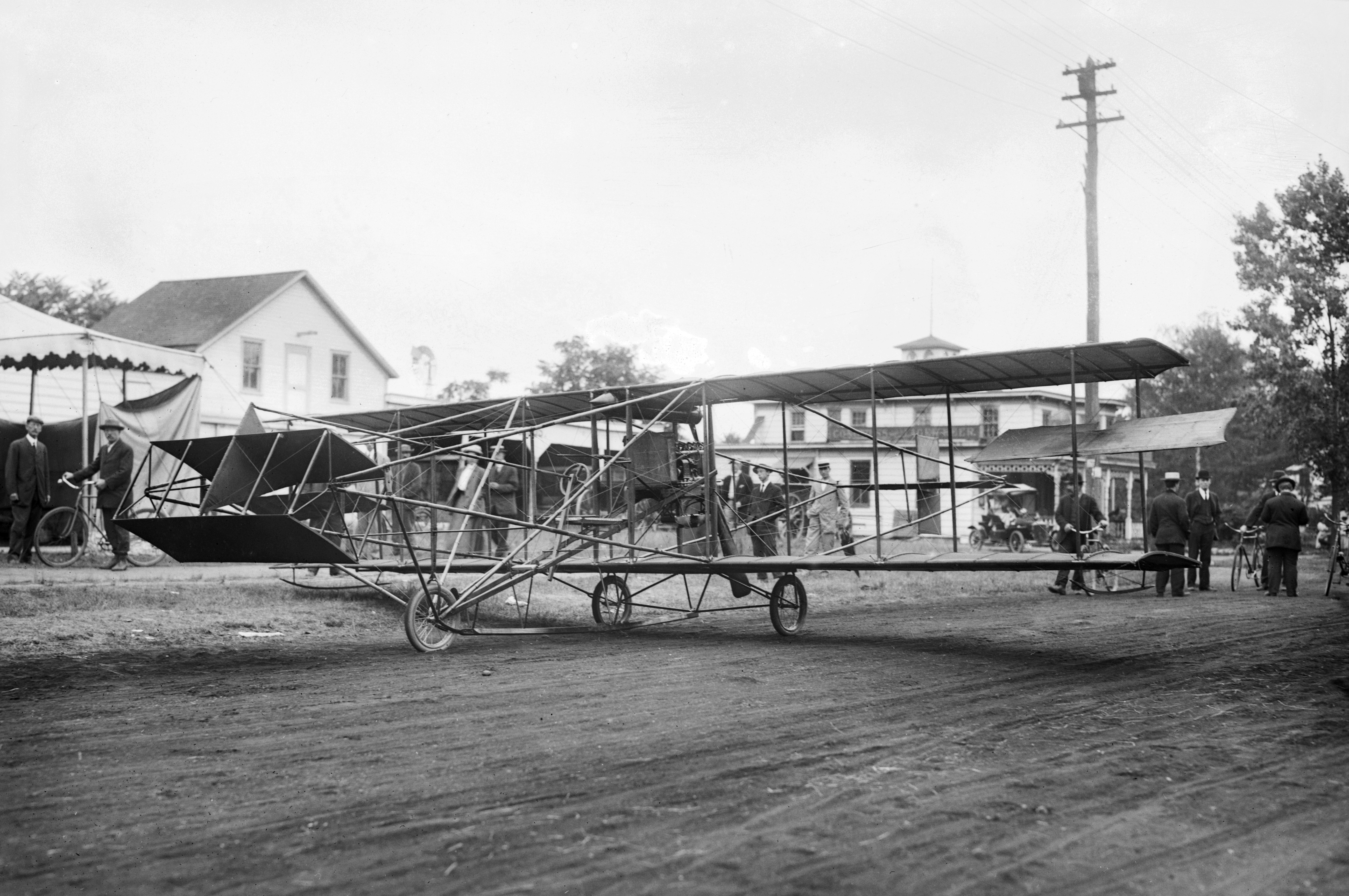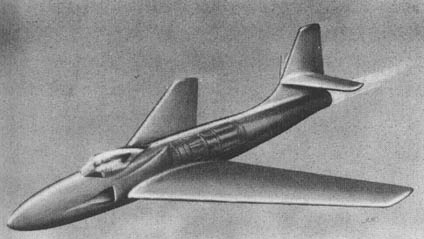|
NACA Cowling
The NACA cowling is a type of aerodynamic fairing used to streamline radial engines installed on airplanes. It was developed by Fred Weick of the National Advisory Committee for Aeronautics (NACA) in 1927. It was a major advance in aerodynamic drag reduction, and paid for its development and installation costs many times over due to the gains in fuel efficiency that it enabled. History and design The NACA cowling enhanced speed through drag reduction while delivering improved engine cooling. The cowling consists of a symmetric, circular airfoil that is wrapped around the engine. In a normal planar airfoil, like a wing, it is the difference in airspeed, and their associated changes in pressure, on the top and bottom of the surface that produces lift. In the case of the NACA cowl, the ring-shaped airfoil is positioned so this lift effect is forward, producing thrust. This thrust does not counteract the total drag of the cowl, but greatly reduces its overall value. The differenc ... [...More Info...] [...Related Items...] OR: [Wikipedia] [Google] [Baidu] |
Curtiss Hawk NASA GPN-2000-001388
Curtiss Aeroplane and Motor Company (1909 – 1929) was an American aircraft manufacturer originally founded by Glenn Hammond Curtiss and Augustus Moore Herring in Hammondsport, New York. After significant commercial success in its first decades, it merged with the Wright Aeronautical to form Curtiss-Wright Corporation. History Origin In 1907, Glenn Curtiss was recruited by the scientist Dr. Alexander Graham Bell as a founding member of Bell's Aerial Experiment Association (AEA), with the intent of establishing an aeronautical research and development organization. According to Bell, it was a "co-operative scientific association, not for gain but for the love of the art and doing what we can to help one another."Milberry 1979, p 13. In 1909, shortly before the AEA was disbanded, Curtiss partnered with Augustus Moore Herring to form the Herring-Curtiss Company.Gunston 1993, p. 87. It was renamed the Curtiss Aeroplane Company in 1910 and reorganized in 1912 after being taken-o ... [...More Info...] [...Related Items...] OR: [Wikipedia] [Google] [Baidu] |
Theodore Theodorsen
Theodore Theodorsen (January 8, 1897 – November 5, 1978) was a Norwegian-American theoretical aerodynamicist noted for his work at NACA (the forerunner of NASA) and for his contributions to the study of turbulence. Early years Theodorsen was born at Sandefjord in Vestfold, Norway to parents Ole Christian Theodorsen, a chief engineer in the Norwegian merchant marine, and his wife Andrea Larsen. He was the oldest of six children. When Theodore’s father took the examinations for a merchant marine engineer's license, he was the only applicant who correctly answered a particularly difficult question. To his father’s surprise his then 12-year-old son was also able to solve the problem. At age 16, after finishing compulsory schooling, Theodorsen attended gymnasium in the nearby town of Larvik. Theodorsen's grades were so outstanding that he was admitted to the leading engineering university in Norway, the Norwegian Institute of Technology in Trondheim. Emigr ... [...More Info...] [...Related Items...] OR: [Wikipedia] [Google] [Baidu] |
Aerodynamics
Aerodynamics, from grc, ἀήρ ''aero'' (air) + grc, δυναμική (dynamics), is the study of the motion of air, particularly when affected by a solid object, such as an airplane wing. It involves topics covered in the field of fluid dynamics and its subfield of gas dynamics. The term ''aerodynamics'' is often used synonymously with gas dynamics, the difference being that "gas dynamics" applies to the study of the motion of all gases, and is not limited to air. The formal study of aerodynamics began in the modern sense in the eighteenth century, although observations of fundamental concepts such as aerodynamic drag were recorded much earlier. Most of the early efforts in aerodynamics were directed toward achieving Aircraft#Heavier than air – aerodynes, heavier-than-air flight, which was first demonstrated by Otto Lilienthal in 1891. Since then, the use of aerodynamics through mathematical analysis, empirical approximations, wind tunnel experimentation, and computer simu ... [...More Info...] [...Related Items...] OR: [Wikipedia] [Google] [Baidu] |
Smithsonian Institution
The Smithsonian Institution ( ), or simply the Smithsonian, is a group of museums and education and research centers, the largest such complex in the world, created by the U.S. government "for the increase and diffusion of knowledge". Founded on August 10, 1846, it operates as a trust instrumentality and is not formally a part of any of the three branches of the federal government. The institution is named after its founding donor, British scientist James Smithson. It was originally organized as the United States National Museum, but that name ceased to exist administratively in 1967. Called "the nation's attic" for its eclectic holdings of 154 million items, the institution's 19 museums, 21 libraries, nine research centers, and zoo include historical and architectural landmarks, mostly located in the District of Columbia. Additional facilities are located in Maryland, New York, and Virginia. More than 200 institutions and museums in 45 states,States without Smithsonian ... [...More Info...] [...Related Items...] OR: [Wikipedia] [Google] [Baidu] |
Townend Ring
A Townend ring is a narrow- chord cowling ring fitted around the cylinders of an aircraft radial engine to reduce drag and improve cooling. Development The Townend ring was the invention of Dr. Hubert Townend of the British National Physical Laboratory in 1929. Patents were supported by Boulton & Paul Ltd in 1929. In the United States it was often called a "drag ring". It caused a reduction in the drag of radial engines and was widely used in high-speed designs of 1930–1935, before the long-chord NACA cowling came into general use. Despite suggestions of it exploiting the Meredith effect, low airspeeds, low temperature differences and small mass flows make that unlikely, particularly when combined with the lack of flow control as the air exits the cowling.Becker, J.; ''The high-speed frontier: Case histories of four NACA programs, 1920–1950'', SP-445, NASA (1980)Chapter 5: High-speed Cowlings, Air Inlets and Outlets, and Internal-Flow Systems: The ramjet investigati ... [...More Info...] [...Related Items...] OR: [Wikipedia] [Google] [Baidu] |
NACA Duct
A NACA duct, also sometimes called a NACA scoop or NACA inlet, is a common form of low- drag air inlet design, originally developed by the U.S. National Advisory Committee for Aeronautics (NACA), the precursor to NASA, in 1945. Design Prior submerged inlet experiments showed poor pressure recovery due to the slow-moving boundary layer entering the inlet. The NACA design is believed to work because the combination of the gentle ramp angle and the curvature profile of the walls creates counter-rotating vortices which deflect the boundary layer away from the inlet and draws in the faster moving air, while avoiding the form drag and flow separation that can occur with protruding scoop designs. Aircraft applications When properly implemented, a NACA duct allows air to flow into an internal duct, often for cooling purposes, with a minimal disturbance to the flow. The design was originally called a submerged inlet, since it consists of a shallow ramp with curved walls recessed into ... [...More Info...] [...Related Items...] OR: [Wikipedia] [Google] [Baidu] |
NACA Airfoil
The NACA airfoils are airfoil shapes for aircraft wings developed by the National Advisory Committee for Aeronautics (NACA). The shape of the NACA airfoils is described using a series of digits following the word "NACA". The parameters in the numerical code can be entered into equations to precisely generate the cross-section of the airfoil and calculate its properties. Origins NACA initially developed the numbered airfoil system which was further refined by the United States Air Force at Langley Research Center. According to the NASA website: Four-digit series The NACA four-digit wing sections define the profile by: # First digit describing maximum camber as percentage of the chord. # Second digit describing the distance of maximum camber from the airfoil leading edge in tenths of the chord. # Last two digits describing maximum thickness of the airfoil as percent of the chord. For example, the NACA 2412 airfoil has a maximum camber of 2% located 40% (0.4 chords) from the ... [...More Info...] [...Related Items...] OR: [Wikipedia] [Google] [Baidu] |
Wright R-790
The Wright R-790 Whirlwind was a series of nine-cylinder air-cooled radial aircraft engines built by Wright Aeronautical Corporation, with a total displacement of about and around . These engines were the earliest members of the Wright Whirlwind engine family. Design and development The R-790 Whirlwind began as the Lawrance J-1, a nine-cylinder air-cooled radial developed in 1921 by the Lawrance Aero Engine Company for the U.S. Navy. The Navy was very enthusiastic about air-cooled engines, which it considered better suited for naval use than liquid-cooled ones.Wright J-5 "Whirlwind" (PDF), by Kimble D. McCutcheon, from the Aircraft Engine Historical Society Lawrance was a small company, though, and the Navy doubted it could produce enough engines for its needs. Despite urgings from the Nav ... [...More Info...] [...Related Items...] OR: [Wikipedia] [Google] [Baidu] |
Curtiss P-1 Hawk
The P-1 Hawk (Curtiss Model 34) was a 1920s open-cockpit biplane fighter aircraft of the United States Army Air Corps. An earlier variant of the same aircraft had been designated PW-8 prior to 1925."US Military Aircraft Designations & Serials 1909-1979 by J.M. Andrade, (Midland Counties Publications, ) 1970, 252pp. Design and development PW-8 The Curtiss P-1 Hawk was the first US Army Air Service aircraft to be assigned the "P" (Pursuit) designation which replaced seven designations for pursuit aircraft, including "PW" (for "Pursuit, Water-cooled engine"). The P-1 was the production version of the Curtiss XPW-8B, an improved variant of the PW-8, 25 of which were operational with the Air Service's 17th Pursuit Squadron In September 1923, the Army ordered production of the PW-8. The PW-8 (Curtiss Model 33) had been developed from the R-6 racer and was acquired by the Air Service after a competition with the Boeing Model 15, designated the PW-9, to replace the existing Army f ... [...More Info...] [...Related Items...] OR: [Wikipedia] [Google] [Baidu] |
Cowling
A cowling is the removable covering of a vehicle's engine, most often found on automobiles, motorcycles, airplanes, and on outboard boat motors. On airplanes, cowlings are used to reduce drag and to cool the engine. On boats, cowlings are a cover for an outboard motor. In addition to protecting the engine, outboard motor cowlings need to admit air while keeping water out of the air intake. Etymology "Cowling" comes from "cowl", which originated from Middle English coule, from Old English cūle, from earlier cugele (“hood, cowl”). This, in turn, came from Ecclesiastical Latin cuculla (“monk's cowl”), from Latin cucullus (“hood”), of uncertain origin. In aviation In aviation, a cowling may be used for drag reduction or engine cooling by directing airflow. Examples in aviation include the NACA cowling and Townend ring. On an airplane, the cowling may also cover part of the fuselage, the nacelles, the engine mount and part of the cockpit.Aviation Machinist's Mates' Manua ... [...More Info...] [...Related Items...] OR: [Wikipedia] [Google] [Baidu] |
Curtiss AT-5a NACA Cowling - GPN-2000-001724
Curtiss Aeroplane and Motor Company (1909 – 1929) was an American aircraft manufacturer originally founded by Glenn Hammond Curtiss and Augustus Moore Herring in Hammondsport, New York. After significant commercial success in its first decades, it merged with the Wright Aeronautical to form Curtiss-Wright Corporation. History Origin In 1907, Glenn Curtiss was recruited by the scientist Dr. Alexander Graham Bell as a founding member of Bell's Aerial Experiment Association (AEA), with the intent of establishing an aeronautical research and development organization. According to Bell, it was a "co-operative scientific association, not for gain but for the love of the art and doing what we can to help one another."Milberry 1979, p 13. In 1909, shortly before the AEA was disbanded, Curtiss partnered with Augustus Moore Herring to form the Herring-Curtiss Company.Gunston 1993, p. 87. It was renamed the Curtiss Aeroplane Company in 1910 and reorganized in 1912 after being taken-o ... [...More Info...] [...Related Items...] OR: [Wikipedia] [Google] [Baidu] |






